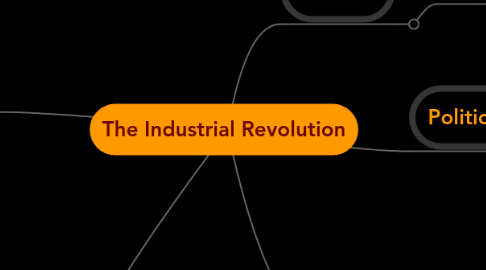
1. Economic
1.1. Population
1.1.1. At the dawn of the Industrial Revolution in the mid 1700s, the world's human population grew by about 57 percent to 700 million. It would reach one billion in 1800. (Note: The Black Plague reduced the world population by about 75 million people in the late 1300s.)
2. Technological
2.1. Steam Ships
2.1.1. When the steam engine was made people started to try put steam engines to move ships, The first attempt was by a guy named
2.1.2. Denis Papin. He used to steam engine to power a paddle wheel on the ship. Denis s idea didn't work because it had design problems and the boilers couldn't provide enough power
2.1.3. In Britain, Thomas Newcomen had the same problem as Denis Papin, Thomas did find a way to rotate the engine but it was too big and bulky to go on the ship.
2.1.4. The first ship that was powered by steam was the Pyroscaphe which was built by the Marquis de Jouffroy d'Abbans in 1783. It ran on the River Soane but it proved to be useless . The Marquis never developed the idea any further.
2.2. Steam trains
2.2.1. From Englishman Thomas Newcomen's atmospheric engine, of 1712, through major developments by Scottish inventor and mechanical engineer James Watt, the steam engine began to be used in many industrial settings, not just in mining, where the first engines had been used to pump water from deep workings.
3. Political
3.1. Trade Union
3.1.1. The punishment for trade union was imprisonment Regardless of this law, some joined trade unions anyway, along with creating strikes and riots. The reason that the unemployed rioted was because they wanted to have a “revenge” on the ones that were working because they felt that their jobs were taken by them. The employed fought to raise their wages and improve their working conditions. Both the employed and unemployed rioted by destroying machinery. In the 1800's, the lives of this class started to improve. It eventually became no longer illegal to form trade unions.
4. Social
4.1. Children
4.1.1. Children were not treated well, overworked, and underpaid for a long time before anyone tried to change things for them. Wages and Hours: Children as young as six years old during the industrial revolution worked hard hours for little or no pay.
4.2. Women
4.2.1. Image result for women industrial revolution The Industrial Revolution in part was fueled by the economic necessity of many women, single and married, to find waged work outside their home. Women mostly found jobs in domestic service, textile factories, and piece work shops. They also worked in the coal mines.
5. Cultural
5.1. Artist
5.1.1. Image result for artists of the industrial revolution Three movements of art overlap with the Industrial Revolution. In Romanticism, artists painted according to ideal standards of beauty. In Realism, artists sought to portray real life in its honest ugliness in the process, rejecting the idealist style of romanticism.

